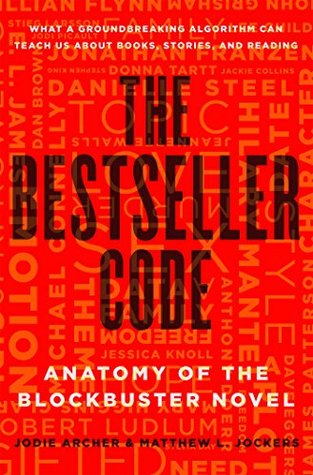More on this book
Community
Kindle Notes & Highlights
by
Jodie Archer
Read between
October 12 - October 17, 2016
Scenes that display this most important indicator of bestselling are all about people communicating in moments of shared intimacy, shared chemistry, and shared bonds.
Charles Kim liked this
Perhaps it is fair to speculate that the portion of the American public that actually reads fiction likes to read more or less about itself. To us, it seems like readers enjoy seeing their own possible realities dramatized.
Strong characters always have agency.
They have some version of power, motivation, drive.
Because of the various ways novelists inscribe character, it is far more difficult for a computer to identify the characters in a novel than the themes, and it is even more difficult for the machine to figure out what those characters are doing.
We found that we could understand a great deal about character agency by training our computer to locate instances of character names
bestselling protagonists have and express their needs. These protagonists want things, and we learn about those wants.
need and want
Characters in bestsellers more often grab and do, think and ask, look and hold. They more often love.
The bestselling character, whether male or female, tells, likes, sees, hears, smiles, and reaches.
This is someone who pulls and pushes, someone who starts, works, knows, and, ultimately, arrives.
Readers want someone to be not to seem. They want someone to do not to wait. They want more confidence and grace than the character who demands and interrupts.
The bestselling character eats, nods, opens, closes, says, sleeps, types, watches, turns, runs, shoots, kisses, and dies.
Most bestselling characters have something magnetic about them that makes them stand out from the crowd. They are gifted in some way, able to achieve what others can’t.


